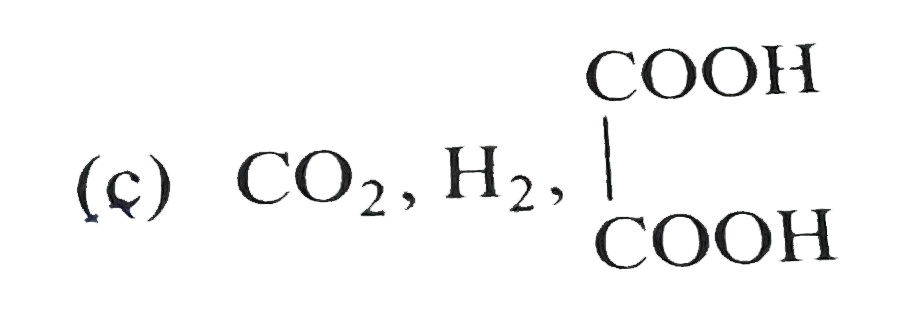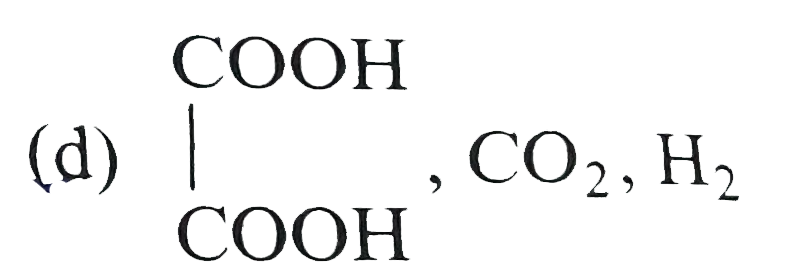Atomic no. of X,Y &Z are 33,53 &83 respectively.
X & Z are non-metal & Y is metal
X ia metalloid, Y is non-metal & Z is metal
X & Z are metals , Y is non-metal
None of these
The correct Answer is:B
To solve the question regarding the classification of elements based on their atomic numbers, we will follow these steps:
Step 1: Identify the Elements
- The atomic numbers provided are:
- X = 33
- Y = 53
- Z = 83
Step 2: Find the Elements Corresponding to the Atomic Numbers
- Using the periodic table, we can identify the elements:
- Atomic number 33 corresponds to Arsenic (As).
- Atomic number 53 corresponds to Iodine (I).
- Atomic number 83 corresponds to Bismuth (Bi).
Step 3: Classify Each Element
- Now, we classify each element based on their properties:
- Arsenic (As): This element is a metalloid. Metalloids have properties of both metals and non-metals.
- Iodine (I): This element is a non-metal. Non-metals are generally poor conductors of heat and electricity.
- Bismuth (Bi): This element is a metal. Metals tend to lose electrons and conduct electricity.
Step 4: Summarize the Classifications
- Based on the classifications:
- X (Arsenic) is a metalloid.
- Y (Iodine) is a non-metal.
- Z (Bismuth) is a metal.
Step 5: Match with Given Options
- The options provided in the question are:
1. X and Z are non-metals, Y is metal.
2. X is metalloid, Y is non-metal, Z is metal.
3. X and Z are metals, Y is non-metal.
4. None of these.
- The correct classification matches option 2: "X is metalloid, Y is non-metal, Z is metal."
Final Answer
The correct answer is option 2: X is metalloid, Y is non-metal, Z is metal.
---
- The atomic numbers provided are:
- X = 33
- Y = 53
- Z = 83
- Using the periodic table, we can identify the elements:
- Atomic number 33 corresponds to Arsenic (As).
- Atomic number 53 corresponds to Iodine (I).
- Atomic number 83 corresponds to Bismuth (Bi).
- Now, we classify each element based on their properties:
- Arsenic (As): This element is a metalloid. Metalloids have properties of both metals and non-metals.
- Iodine (I): This element is a non-metal. Non-metals are generally poor conductors of heat and electricity.
- Bismuth (Bi): This element is a metal. Metals tend to lose electrons and conduct electricity.
- Based on the classifications:
- X (Arsenic) is a metalloid.
- Y (Iodine) is a non-metal.
- Z (Bismuth) is a metal.
- The options provided in the question are:
1. X and Z are non-metals, Y is metal.
2. X is metalloid, Y is non-metal, Z is metal.
3. X and Z are metals, Y is non-metal.
4. None of these.
- The correct classification matches option 2: "X is metalloid, Y is non-metal, Z is metal."
The correct answer is option 2: X is metalloid, Y is non-metal, Z is metal.
Similar Questions
A compound which contains one atom of X and two atoms of y for each three atoms of z is made of mixing 5 gm of x, 1.15×1023 atoms of Y and 0.03 mole of Z atoms. Given that only 4.40 gm of compound results. Calculate the atomic weight of Y if atomic weight of X and Z are 60 and 80 respectively.
View SolutionIf the three elements X,Y and Z form a triad and atomic weights of X and Z are 9 and 40 respectively then the atomic weight of an element y is _________
View Solution
Knowledge Check
A compound contains X, Y and Z atoms. The oxidation state of X, Y and Z are +2,+2 and −2 respectively. The possible formula of the compound is
AXYZ2BY2(XZ3)2CX3(Y4Z)2DX3(YZ4)3
Products X, Y and Z are respectively:A B
B C
C D
D

x,y and z are respectivelyA1,2,3B1,5,3C1,3,5D5,3,1
There are three elements X, Y and Z. Their atomic numbers are 11, 18 and 19 respectively. Amongst X, Y and Z:
Which element is chemically inactive?
View SolutionThere are three elements X, Y and Z. Their atomic numbers are 11, 18 and 19 respectively. Amongst X, Y and Z:
Which elements belong to the same period?
View SolutionThere are three elements X, Y and Z. Their atomic numbers are 11, 18 and 19 respectively. Amongst X, Y and Z:
Which elements belong to the same group?
View SolutionThree elements X,Y,Z are following Dobereiner's Triad rule. If the atomic weight of X and Y are 10 and 26 respectively, then atomic weight of Z will be:
View Solution
X, Y and Z, respectively are :
View Solution
